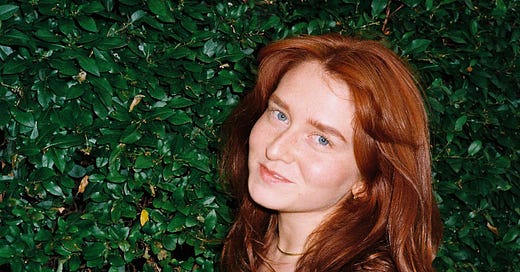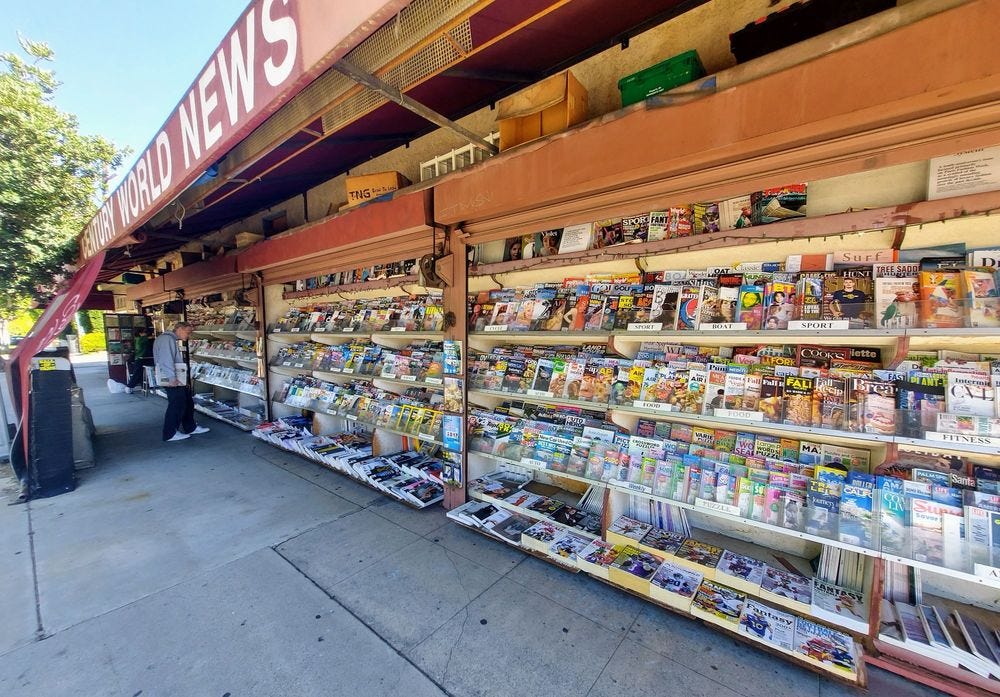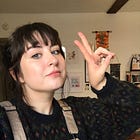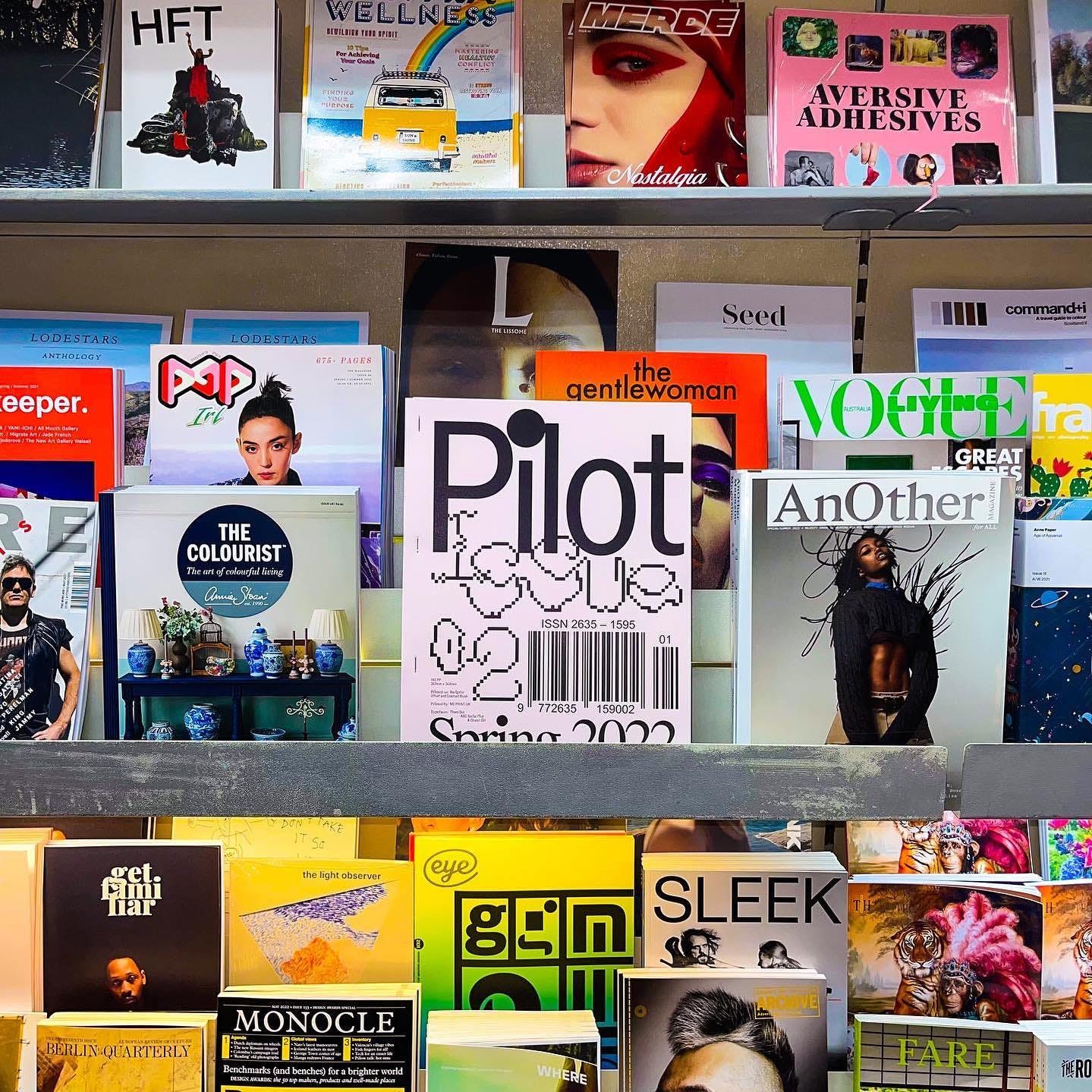Dagny Tepper: The work means different things to different people
Pilot magazine’s Founder on her favourite American-isms, unconventional methods of consumption, and how to define success
Welcome to Human Pursuits, the column that features need-to-know names and stories in media and other creative spaces. Today, an interview with Pilot magazine’s “head chef,” Dagny Tepper.
It’s hard to find interesting magazines in Vancouver. If you’re lucky, maybe you score a copy of Apartamento or The Gentlewoman from one of the city’s cooler ateliers or source the latest Monocle from one of the big-name bookstores. Maybe you see
at a party and convince him to sell you his last issue of Casa Montego.Maybe that happens. Maybe.
But there is no Mecca for magazines in the city. Nothing remotely close to Century World News in Los Angeles, or Soho News International in New York. Hudson News? Forget it. That’s only at the airport.
Sometimes I catch myself perusing the racks at downtown drug stores, fantasizing about publications that may or may not exist, as if the right rag could solve all my problems. While I’m staunchly pro-newsletter, there’s something special about experiencing writing on paper, about holding a piece of ephemera in your hands.
I was reminded of this recently while chatting with Pilot magazine’s Founding Editor-in-Chief and Creative Director Dagny Tepper.
A creative’s creative, Dagny started Pilot while still in college. Today it is one of the U.K.’s most exciting indie mags, covering the arts and lifestyle with an experimental flair, as evidenced by the brand’s physical designs.
Its latest issue, entitled Underbelly, available HERE, explores the idea of “‘living softly’ through art, mindset, and connection,” and is meant to be read vertically.
Our edited and condensed conversation touched on Dagny’s decision to leave Philadelphia (home of the short kings), her favourite American-isms, Pilot’s early days, her tactile approach to creativity, submissions from actual flyboys, and how she defines success.
But we began with her Zoom profile picture, an animated avatar of the Editor herself.
ES: Your avatar is so good. The resemblance is uncanny!
DT: No because why did they give me this crazy jawline? Now I have to live up to this extremely snatched face.
ES: You look like you’ve been mewing.
DT: Exactly.
ES: I thought you were British for some reason, so I’m already learning something.
DT: A lot of people think that. I’ve lived here for seven years, but I’m American. I’m from Philly, originally.
ES: That’s funny, I was just shit-talking Philly a few weeks ago with
DT: Really?
ES: She said there are no tall men in that city. All the guys are under 6 feet tall, apparently.
DT: I’ve never thought about that before, but it’s true. Everybody is pretty small there. You never have trouble seeing at concerts.
ES: So you’re confirming that the men in Philly aren’t much to write home about?
DT: Philly isn’t much to write home about if I’m being honest. Laughs.
ES: I’ve never been but it seems many people are saying this.
DT: You have to humble us right now because The Philadelphia Eagles are killing it. Everybody in the city is on their high horse.
ES: Let’s save the Eagles chat for another newsletter. Laughs. Why did you move to the U.K.?
DT: I went to university in Scotland. At the time I thought I wanted to be a lawyer, and I loved being somewhere different and meeting interesting people. I have always felt that I wanted to live somewhere other than the U.S. — not that I don’t like it, I’m probably more patriotic than your average art hoe girl.
ES: Laughs. What are your top three favourite things about the U.S.?
DT: One: probably all the different types of climates and terrains. Two: all of the saturated fats and chemicals. I love chemicals. My friend just visited me, and I got him to bring me hot chocolate because I miss it so much. I need that shit.
After chemicals, my third thing is probably just American straightforwardness. When I’m home, I love the feeling of saying whatever is on my mind and talking to strangers.
The British people are like my family now, so I can say this, but they can be real handfuls. They’re not necessarily as affable. Or they just hear it from my weird American accent and think “What the fuck is this girl trying to do?”
I love chemicals. My friend just visited me, and I got him to bring me hot chocolate because I miss it so much. I need that shit.
ES: Canadians can be a little passive-aggressive that way, too. But so why did you pick Scotland? Does your family have ties there?
DT: Honestly, I'm really bad at learning new languages. That really limits your options. So I went with the U.K.
ES: And so you’ve been there pretty much your entire adult life?
DT: Isn’t that wild? I feel like I was the last person you’d see doing that. In high school, my friends would go on Euro trips and come back loving the European vibe and that’s so not me.
ES: How did you go from pursuing law school to doing journalism and graphic design with Pilot?
DT: Well, I started by taking a leap into law. I got an internship, but I knew pretty quickly I wasn’t going to be of service to the world, or to myself, doing that.
ES: What kind of law did you see yourself practicing? Were you going to be a corporate big wig?
DT: Yeah, I wanted to be so corporate. I was more interested in being badass than passing the bar for a few years there. My parents raised me in this way where it seemed like a foregone conclusion that I would be some sort of businesswoman.
ES: How do they feel about you dropping all that and pursuing the more creative path instead?
DT: I don’t know, because I’m all the way over here. I think they're happy for me. One benefit of having a physical product is you can connect with your family over something you’re doing as a creative. Having something tangible makes it easier to talk about my work, especially with older people.
ES: I’ve had family members who have been really supportive of Human Pursuits from the jump. It kept me going early on.
DT: There should be something to refer to those people as because they're like my lifeline. They’re what keeps me going. One day my friend’s mom — she wasn’t even a close friend — turned to me and said “I think you’re very bright.” It was just one of those encouraging things.
ES: A moment like that can sustain your work for years.
DT: It’s validating, especially from someone who doesn’t know you super well, because they have to look at the work without trying to see it through your eyes.
I feel like people should talk about stuff like that more. You almost feel cheesy for caring about it. But some people don’t get that kind of support. It’s a special sentiment.
ES: And so you started Pilot in college?
DT: Yes. I was building it and growing it, and it felt like I was finally in my element. I was learning more than I ever had in my life. Included in that was the observation that graphic design isn’t my thing. I realized that some people are really good at things that I’m not. It helped me understand myself and my skill set. I’ve definitely moved more into the creative director role for Pilot. And the journalism that comes with the magazine is something I’ve tried to nurture.
ES: What magazines did you read growing up?
DT: I was obsessed with those flimsy tween magazines like Tiger Beat and J-14. I remember seeing them and getting instant sparks. I would barely even read them, which is the weird thing. I’d crumple them up, throw them in the bottom of my backpack, maybe rip stuff out. That’s always been interesting to me, and an inspiration point with Pilot. The idea of letting the work mean different things to different people, and digest it the way that they want to.
ES: Are you a tactile learner?
DT: Maybe. What does that mean again?
ES: I associate tactile learning with touching and doing stuff, rather than having concepts explained to you. You’d rather learn how to make a magazine by using Photoshop or cutting up pieces of paper, than by having me explain it to you, or having to read about it.
DT: Oh, I’m definitely a tactile learner. I’m playing with these Bobby Pins as we speak.
ES: It only occurs to me because I love magazines too, but I remember actually reading them. I saw them as an information source.
DT: And I love that. I love seeing someone read Pilot page by page. I’m so careless with it. I will throw them around.
ES: Unrelated, but how often do you get actual pilots contacting you about the magazine, thinking it’s for them?
DT: Wow! Nobody has ever asked me this. It happens all the time. We get really interesting emails. We’re in the process of publishing pictures from a pilot. He submitted pictures of his plane.
ES: That’s so sick. Laughs.
DT: I love his photos, they were better than anything else I saw that day. I told him we wanted to publish them and he was so excited.
Everything I do with Pilot is so instinctual. I’ll know if something is going to be in the magazine within seconds of seeing it, which can be good and bad. But yeah, he’s based in Anchorage. We’ve never included work from Alaska before.
I want to create a space where people feel they can flesh out their most complicated and most experimental ideas, knowing those ideas will be positioned in a way that will be appreciated.
ES: The current issue is dedicated to the idea of living softly. Why is that important to you at this moment in time?
DT: Underbelly is about vulnerability and transparency in the creative sphere, and seeing your vulnerability as a tool to make people feel less alone. We were trying to reward people who have been raw and honest with their audiences. For example, it features a conversation with the music producer Vegyn, who talked a little bit about the vulnerability that went into making his record, and the idea of measuring up joy with pain and playing with those two feelings.
ES: A lot of people don’t give themselves the space to do that. Or they think they should only be holding onto joy.
DT: Exactly. I think the idea of holding two ideas at once is a recurring theme in a lot of the pieces as well.
ES: The current issue is also presented in a somewhat unconventional way. You decided to make it a flipbook. As someone who has been told that their thing is kind of niche, I wonder what success looks like to you with this project.
DT: My aim for Pilot is to create a space where people feel they can flesh out their most complicated and experimental ideas, knowing those ideas will be positioned in a way that will be appreciated. I want to nurture that feeling between the creators and readers because I believe there is value in creating and consuming things through less conventional means.
ES: It almost sounds like you’re more interested in helping people self-actualize and offering them space to achieve their creative goals, which is a very ambitious and cool thing to be doing, and a much better way to think about success.
DT: I remember the time I felt most successful doing the magazine, this random writer, who I’d never met before, said her dad read her piece in one of our issues. She told me it was the first time she’d ever seen him proud of her. When I say it out loud, it almost sounds kind of dark. But something about the way her eyes lit up has stuck with me. It’s still a peak.
Dagny Tepper is the creative director for Pilot magazine. She lives in London, England. Purchase Issue 05: Underbelly HERE.









